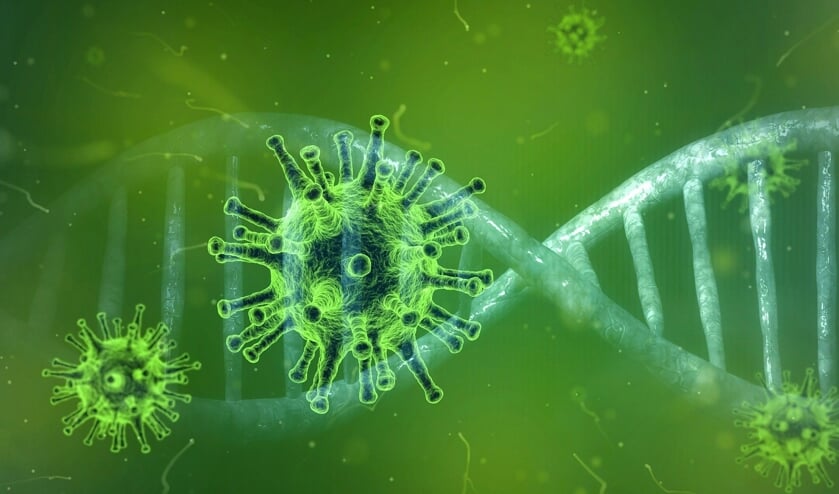BILTHOVEN Last week, the number of new reports of COVID-19 for the second week in a row decreased compared to the week before. The current decrease in reports and hospital admissions is in line with the calculations made by the RIVM National Institute for Public Health and the Environment prior to the measures. The number of reports has decreased in all regions. However, the decrease in the number of positively tested persons, hospital and ICU admissions this week is clearly less than the week before.
The number of people who can infect other people with the coronavirus has been estimated this week at nearly 118,000 people. The decline in the number of COVID-19 infectious people in the Netherlands is much slower in October and November than during the first wave in March and April (see figure below). This is clearly visible in the development of the number of infectious persons. On March 24 there were 169,000 infectious persons in the Netherlands. That number dropped 43% in three weeks to 96,000 infectious individuals on April 14. On October 15 there were 159,000 infectious persons in the Netherlands. In the past three weeks, that number has dropped 25% to 118,000 infectious people on Nov. 5.
In the past week, 37,706 reports of new proven COVID-19 * infections were received, which is 5,915 (-14%) less than the week before. This decrease is less than the week before, when a decrease of 32% was reported. A decrease can again be seen in all age groups. The decline is also visible in all regions. In the regions of Kennemerland and Rotterdam-Rijnmond, we see the largest decrease in the number of new reports per 100,000 inhabitants this week. Yet the number of people with a positive test result is still very high: 20 of the 25 regions are still in a severe phase of the COVID-19 epidemic, with more than 150 infections per 100,000 inhabitants. None of all regions are in a manageable phase with less than 50 infections per 100,000 inhabitants.
Fewer people tested, percentage of positive tests decreased
From 9 to 15 November, 226,094 ** persons were tested in the GGD test lanes, almost 19,000 fewer than in the previous week. The results are known for 226,083 people; of these, 31,219 people tested positive. The percentage of people who tested positive is thus 13.8% and has decreased slightly this week compared to the previous week. But the percentage positive is still high and comparable to the beginning of October (week 41), when the percentage positive was 13.6%.
The time between making an appointment and receiving the results of a test in the GGD test streets has been greatly reduced in recent weeks. Someone who has made an appointment by telephone on 0800-1202 or online now has the results of the corona test in less than a day up to a maximum of 38 hours.
The number of new nursing home locations with at least one resident with confirmed COVID-19 has decreased in recent weeks. In the past week, 156 new infected nursing home locations were added, compared to 182 in the week before.
Mortality higher than expected, but increase does not increase further
Statistics Netherlands reports in the week of 2 to 8 November that the mortality rate has not increased further compared to a week earlier. The mortality in this week is, as in week 44, 700 deaths higher than expected.
In the most recent data from the RIVM from October 29 to November 4, mortality has increased sharply in the age groups 65-74 years and 75 years and older, just like the week before. Mortality was increased in all regions.
The emerging higher mortality coincides with the second wave of the corona epidemic in the Netherlands. A significant portion of excess mortality is expected to be related to COVID-19. Which part that is will become clear later in the cause of death registry.
REPRODUCTION NUMBER R BELOW 1 The reproduction number of October 30 ***, at 0.89 (lower limit: 0.86 and upper limit: 0.91), barely changed compared to a week earlier. The reproduction number of 0.89 means that 100 people with COVID-19 together infect 89 other people with the virus. The lower the reproduction number the better.
–


